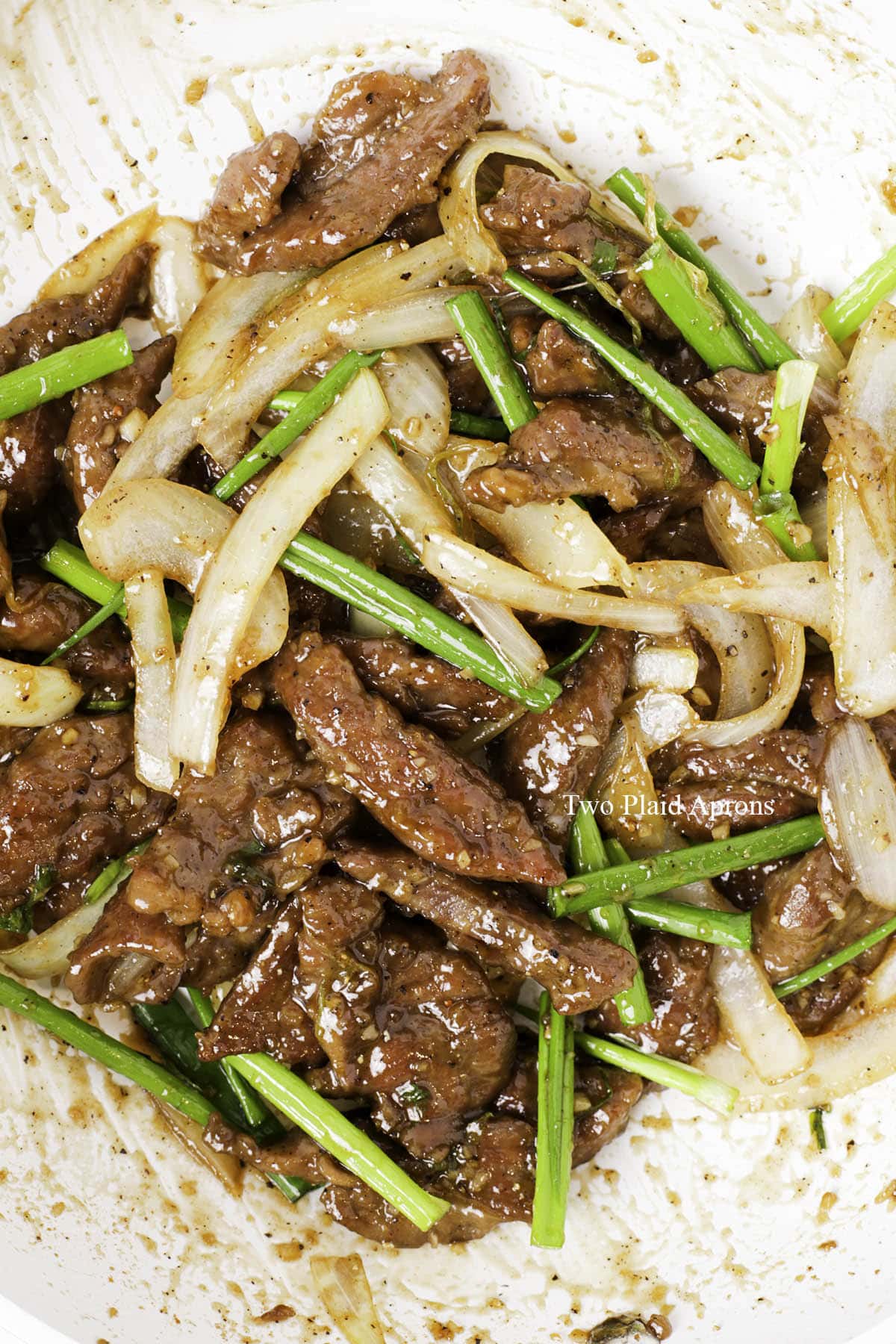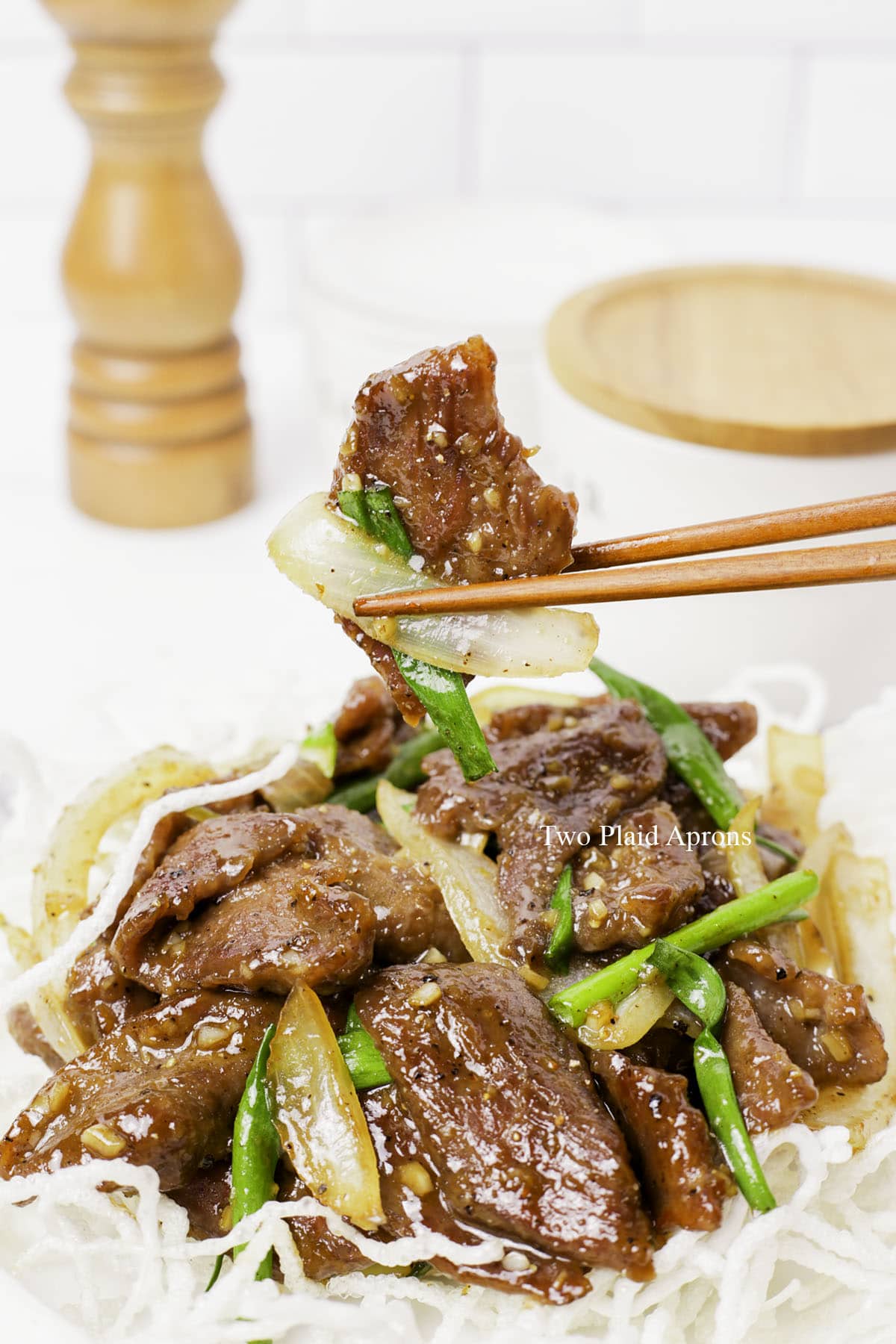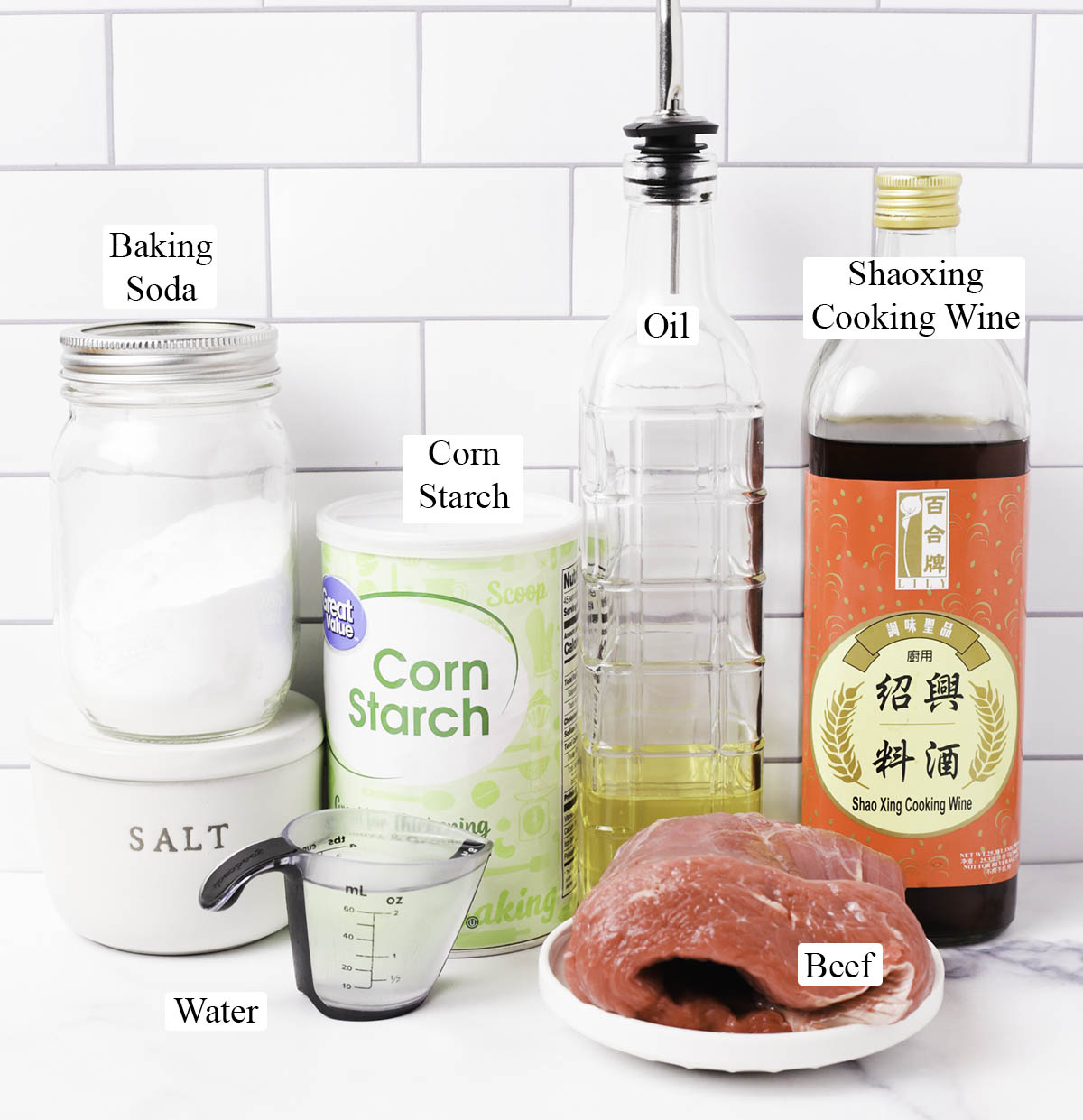Mongolian beef is one of the most popular Chinese takeout beef dishes. It's sweet and savory and has just enough char to imitate BBQ flavors. The beef is also super flavorful and totally addictive. You can easily make this recipe at home in 30 minutes and pair it with some sautéed garlic bok choy to complete the meal.
Chinese takeout dishes are a stable on our weekly menu because they are our ultimate comfort foods and always hit the spot. We usually have trouble choosing between chicken and broccoli and sesame chicken because both are so darn good.
But this Mongolian beef is really making the two compete for a spot on our dinner menu!
If you're looking for more Chinese takeout dishes to easily make at home, check out our Chinese takeout staples: shrimp fried rice, shrimp lo mein, and kung pao chicken!
What is Mongolian beef?
Mongolian beef is one of the most popular Chinese takeout beef dishes that is believed to be from Taiwan. It is sweet and savory and stir fried with onions, green onions, and served over a bed of fried vermicelli rice noodles or simply with some rice.
But what makes Mongolian beef so popular and addictive?
The beef itself is super flavorful and tender from marinating and cooked using the velveting technique. Then, it's stir fried with Shaoxing rice wine and lots of onions, which makes it super aromatic. The beef stir fry is then seasoned with soy sauce and sugar that imitates the charred, caramelized flavors of BBQ beef through high heat of the wok, also known as "wok hei", making the dish sweet, savory, and impossibly addictive and hard to resist!
Ingredient notes and substitutions
For marinating the beef:
- Flank steak - This cut of beef is great for beef stir fry and is the most common cut of beef used in Chinese take-out dishes, like beef and broccoli. Beef flank steak is cheaper than some other cuts of beef and is very flavorful.
- Baking soda - The is the secret ingredient that Chinese restaurants use to make their beef super tender. Just a small amount will go a long way.
- Salt - For seasoning the beef.
- Shaoxing rice wine - It makes the beef more fragrant and also helps to get rid of any wanted beefy flavors. You can also use some dry sherry if you can't find Shaoxing or more water if you can't consume alcohol.
- Water and cornstarch - The water helps to hydrate the beef, so that the beef stays juicy even after cooking. It's also the binding element to velvet the beef with cornstarch. If you prefer, you could use potato starch instead.
- Oil - Any neutral oil will do. A small amount of oil added to the beef marinade helps to keep the beef from sticking to each other. It will be easier to separate the beef when cooking.
For the rest of the dish:
- Yellow onion and green onion - Not only do these onions season and flavor the Mongolian beef, they're also the veggies that make the dish!
- Garlic - To make the dish more aromatic and flavorful.
- Sugar and soy sauce - These are the main seasonings for Mongolian beef. If you prefer you could use brown sugar instead of granulated white sugar. As for soy sauce, you can use both regular or low sodium. However, if using low sodium soy sauce, you may need to use a little more.
- Black pepper - Although you can adjust the amount of black pepper in this recipe, we highly recommend using the amount suggested. Black pepper adds a nice touch of peppery note to the dish and a pleasant amount of heat as well. If you prefer, you could use some crushed red peppers instead.
- Shaoxing rice wine - Adding Shaoxing rice wine to the beef stir fry will dramatically make the dish more aromatic and flavorful. You can usually find Shaoxing at most Asian markets.
- Rice vermicelli noodles (optional) - Some Chinese restaurants serve Mongolian beef over a bed of fried rice noodle puffs. The fried vermicelli noodles add an extra texture to the dish and the noodles soaked with sauce becomes soft and chewy. We recommend medium thickness rice noodles for this.
Best cut of beef to use
Beef flank steak is the best cut of beef for quick stir fry dishes. It's cheaper but still flavorful, and you can easily tenderize it with a little bit of baking soda. You could use eye rounds, chuck roasts, and skirt steak as well, but they tend to be drier. Another reason we recommend flank stead is because it has a good ratio of fat so that the beef won't taste dry. Just make sure to cut the beef into slices no thicker than ¼ inch, against the grain.
You could also go for more expensive cuts like beef tenderloin, ribeye, and new york strip if your budget allows.
How to make Mongolian beef
1. Marinade the beef. Vigorously mix together the water, rice wine, salt, and baking soda to season and tenderize the beef slices. Add the cornstarch and oil to velvet the beef for cooking. Let the beef marinate for at least 10 to 15 minutes or overnight.
2. Sear the beef. Heat a wok or pan with enough oil to cover the bottom generously. Sear the beef on both sides until cooked and golden brown. Remove and set aside.
*If you don't mind using a bit more oil, fry the beef in about 1 inch of oil (around 375°F). Then, set the beef aside to drain on paper towels. This actually makes the cooking process easier.*
3. Stir fry the aromatics. Heat 1 to 2 tablespoons of oil in the same wok or pan. Cook the garlic until fragrant, then add the yellow onion and white parts of the green onion. Stir fry briefly until the onions are no longer raw.
4. Stir fry the beef. Add the beef back into the pan and stir fry with black pepper. Drizzle the rice wine around the pan and cook until fragrant and the rice wine evaporates.
5. Season. Add the sugar and soy sauce and stir fry until everything is well combined and the Mongolian beef smells slightly caramelized/charred.
6. Finish. Add the green parts of the green onion and stir fry briefly. Serve over the bed of fried rice noodles and side of rice. Enjoy!
Fried vermicelli (rice noodle) nest
This step is totally optional, but some Chinese restaurants, like my parents, serve Mongolian beef over a bed of puffed rice vermicelli. The fried vermicelli adds a crispy element to the dish and when soaked with sauce, the vermicelli becomes soft and chewy, like cooked noodles. We recommend using medium thickness rice vermicelli noodles, like the ones used bún thịt nướng (Vietnamese grilled pork and vermicelli bowl).
To make the puffed rice vermicelli nest, heat 1 to 2 inches of oil until hot (about 350°F). Add the rice noodles and fry until puffy, about 30 seconds to 1 minute. Set aside to drain.
Recipe tips
- Freeze the beef for easier cutting. If you have time, semi-freeze the beef so that it's easier to cut into thin slices. But make sure to thaw the beef thoroughly and drain the blood before marinating.
- Allow the beef to marinate for at least 10 to 15 minutes, or even better overnight. This makes sure the beef is well seasoned, but more importantly, ensures the beef is well tenderized.
- Don't skimp on the onion and green onion. These onions are what makes Mongolian beef.
- Don't skip the black pepper or shaoxing rice wine if possible. Black pepper adds a nice bite to the sweet and savory beef stir fry, and shaoxing rice wine makes the dish super fragrant.
Storage and reheating
Leftover Mongolian beef can be stored in the fridge for 3 to 4 days. To reheat, simply sauté in a pan over medium heat with a small amount of water until hot.
FAQ
Mongolian beef vs Szechuan beef
Both of these beef dishes are popular Chinese takeout items. Mongolian beef a sweet and savory dish with lots of yellow and green onions. On the other hand, Szechuan beef is usually stir fried with more variety of vegetables and tastes savory and spicy with a hint of sweetness.
What is Mongolian sauce made of?
Every restaurant makes their Mongolian beef differently. Our Chinese takeout Mongolian beef copy-cat recipe uses only soy sauce, sugar, shaoxing rice wine, and black pepper for the sauce.
How to make Mongolian beef tender?
The secret to how Chinese takeout restaurants make their beef so tender is marinating with baking soda! The same applies to Mongolian beef. But do also make sure to slice the beef thinly and to no over-cook it.



Comments
Post a Comment